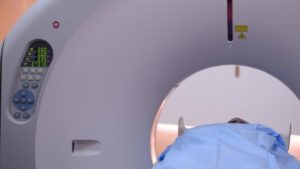The covid-19 pandemic has compelled the radiology departments to adopt a few new practices, such as remote reporting, staff redeployment, and Covid-care related services. However, there is a problem on this horizon that the young radiologists must address – climate change.
Peter J. MacMahon and Bryan W.Buckley, holding Master in the Department of Radiology of the Misericordiae University Hospital, Dublin, argued this Tuesday, “Radiology and healthcare can adapt, as it did over several years in the past. But it should be harnessed to address the next world health challenge, which is the climate crisis.” They also added, “As trainees in radiology, we have to lead this pressing issue.”
Buckley, the third-year resident student of the Irish Hospital, together with MacMahon addressed the problem with some potential solutions in the Radiology Journal. Brief takeaways of the journal are enlisted in 7 points:

#1: the imaging equipment of radiology departments is energy-intensive. For instance, a typical MRI scanner needs adequate power of cooling a three-bedroom apartment with central air for one day, while 32 reporting stations require an equivalent amount of 12 Swiss homes. Meanwhile, ultrasound requires one-twentieth of the energy of MRI and CT.
#2: Imaging studies should be clinically justified, as the authors noted. However, such decisions should also be taken efficiently, factoring in the ecological impact.
#3: The rapidly growing radiology data storage is expensive. Over 28.5 million studies conducted across the national integrated imaging system of Ireland, amounted to 1 petabyte, and the figure is still growing. Moreover, over half of that total is related to CT. As exams become more complex, storing and sending studies requires more and more energy.
#4: However, not only imaging storage is inefficient in this field. Cooling systems and servers require approximately 86 percent of energy. With the interest in artificial intelligence fast-growing, data sets, hardware, and computational effort would all demand additional energy.
#5: On the brighter side, the technology-heavy foundation of radiology uniquely positions this specialty to embrace sustainable practices. The shift begins locally, according to the pair, with trainees educating and advocating for others.
#6: The principle of “as low as reasonably achievable” mandates providers and exposes patients to little radiation. This is also applicable to the environment. A situation using ultrasound for tracking ovarian cysts instead of an MRI optimizes the economic as well as ecologic impact without affecting patients, according to the authors.
#7: Finally, radiologists also must limit regular data creation and storage indefinitely. Excess data is created regularly, and stored, which is not required. Abbreviated protocols of MRI generate interest and are both ecologically and economically sound, cited the authors. Storing multiple iterations and reconstructions of the raw data of CT and MRI, meanwhile, are most unlikely to be required. It need not be saved for a lifetime.
sepStream® is the one-stop solution for all kinds of medical imaging and diagnostics. Using high-quality imaging software and equipment, we aim to deliver impeccable and accurate imaging results.